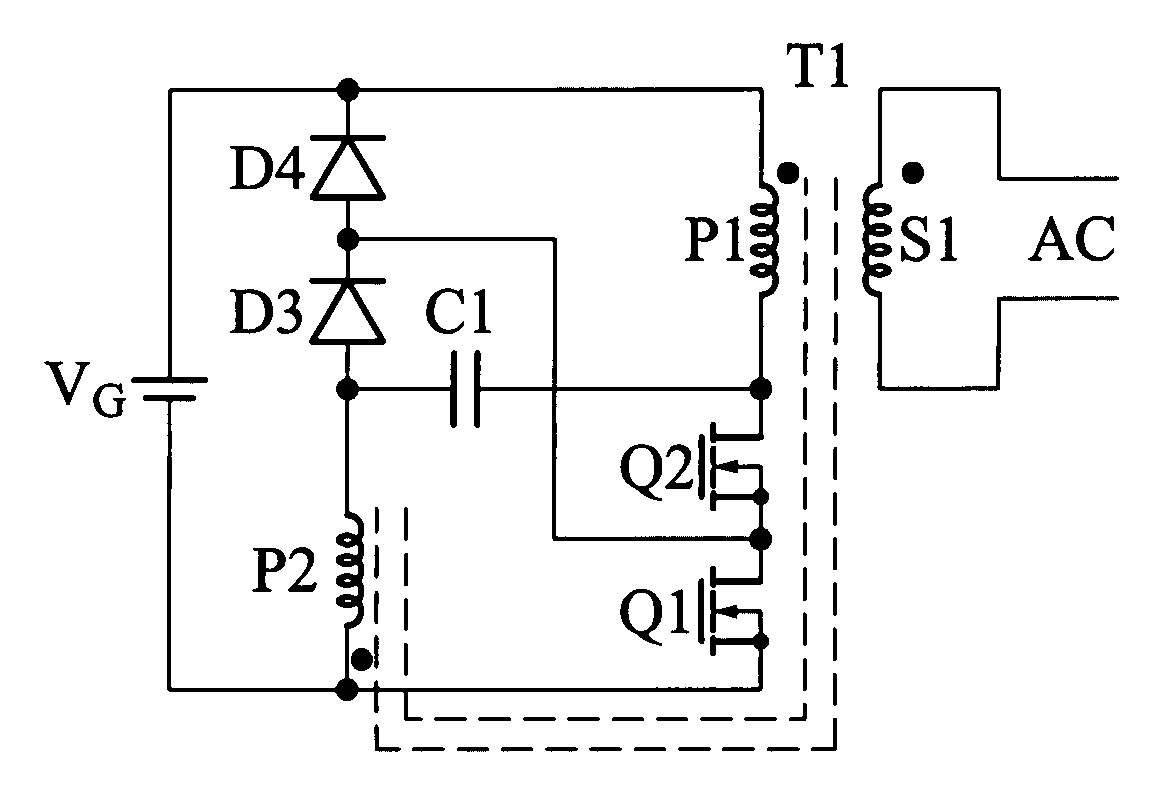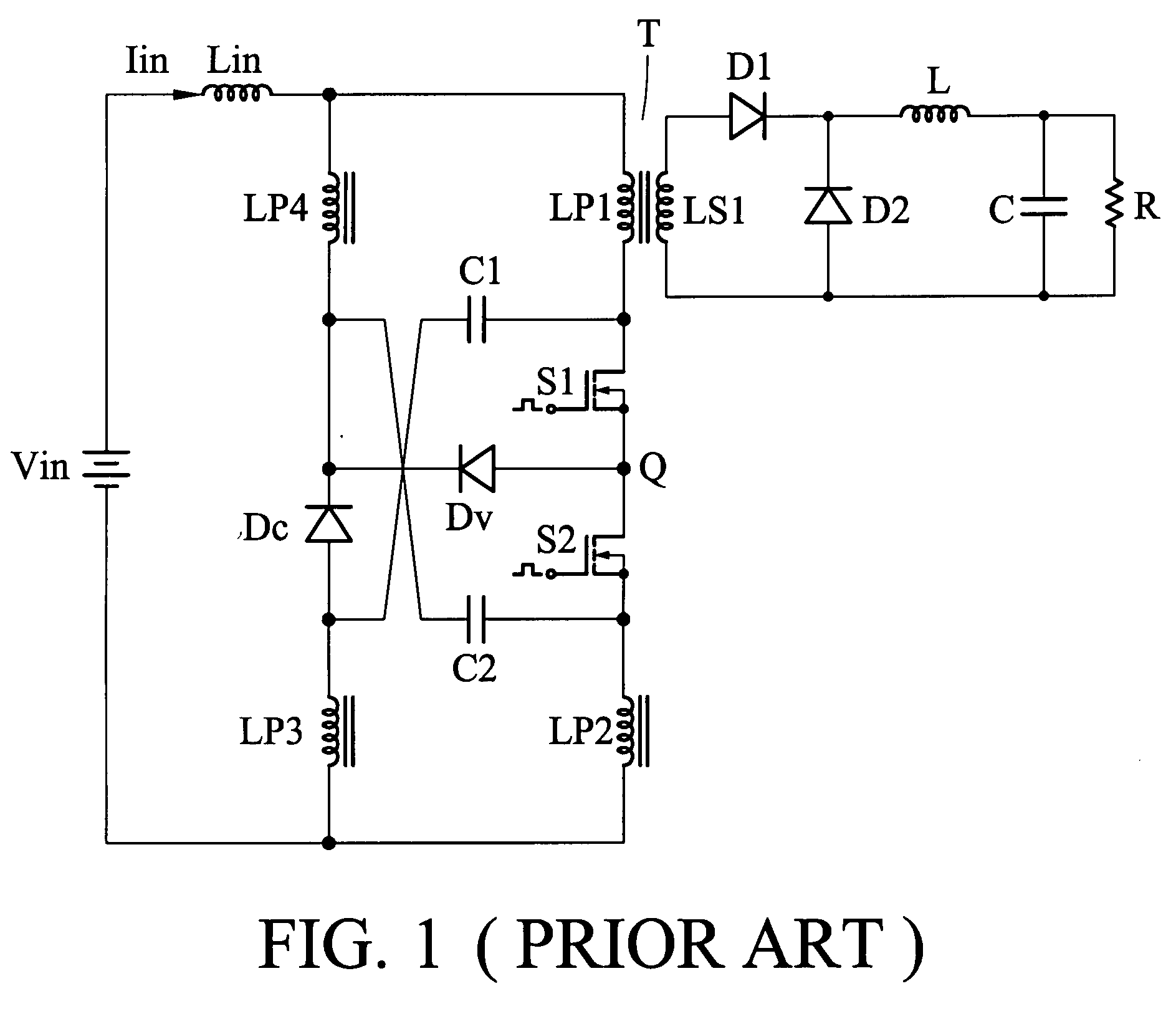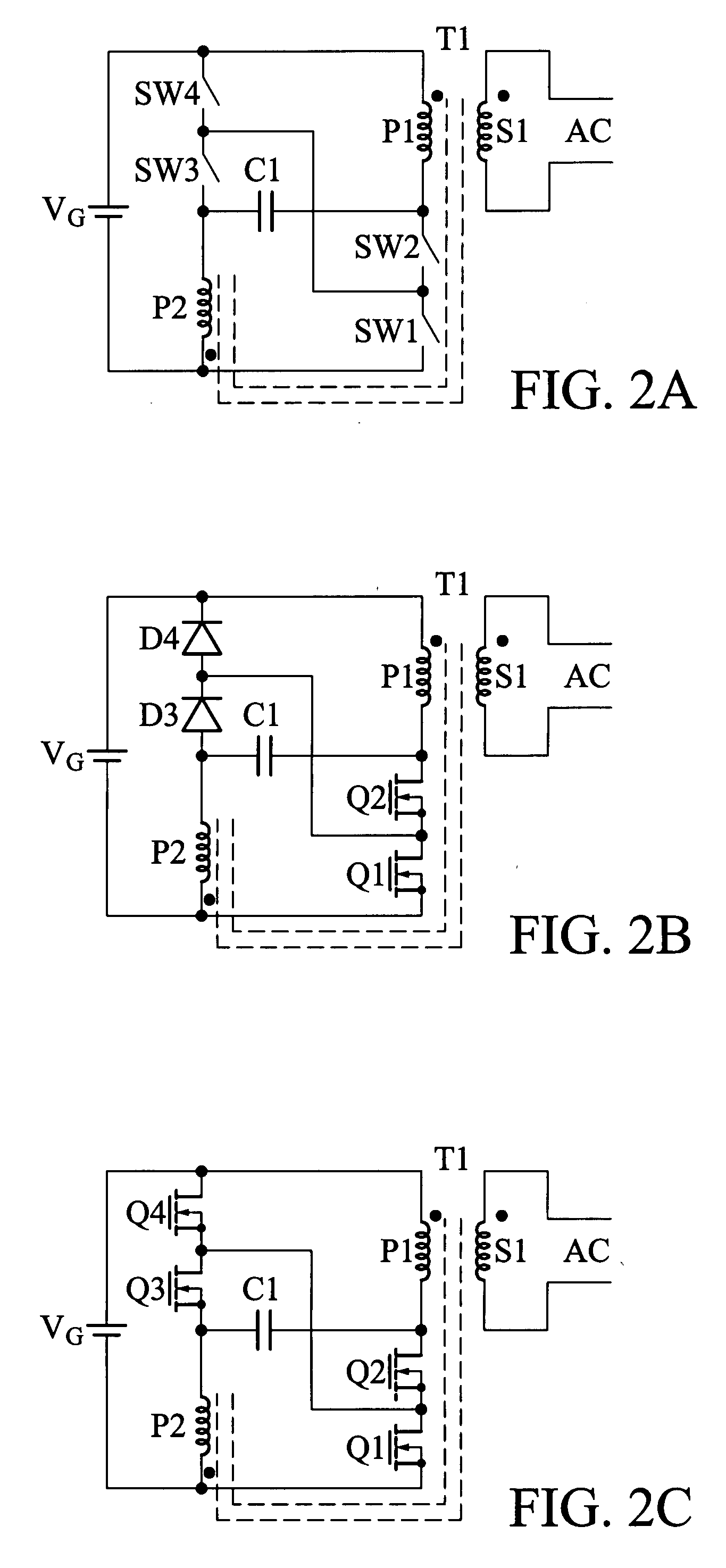Low voltage stress power converter
a power converter and low voltage technology, applied in power conversion systems, dc-dc conversion, climate sustainability, etc., can solve the problem of limited voltage stress improvement, and achieve the effect of reducing current rippl
- Summary
- Abstract
- Description
- Claims
- Application Information
AI Technical Summary
Benefits of technology
Problems solved by technology
Method used
Image
Examples
first embodiment
[0030]the present invention, A DC to AC inversion circuit is shown FIG. 2A. A voltage source, VG, provides a DC input to the inversion circuit. Two series circuits are parallel-connected with the DC input. The first series circuit includes primary P1 of transformer T1 and the first switch pair, SW1-SW2. The second series circuit includes the second switch pair, SW3-SW4, and primary P2 of transformer T1. The primaries P1 and P2 of transformer T1 have equal number of turns. Within each series circuit, there is a node at which point the respective switch pair connects with its respective primary. These nodes are coupled by capacitor C1. The center nodes of the first switch pair and the second switch pair are connected together. The circuit's AC output is provided at secondary S1 of transformer T1.
[0031]Operationally, the DC voltage, VG, is supplied to charge capacitor C1 via the two transformer primaries (P1 and P2) to the input voltage.
[0032]An embodiment to that shown in FIG. 2A is d...
second embodiment
[0039]the present invention, a DC to AC inversion circuit is shown in FIG. 3A. A voltage source, VG, provides a DC input to the inversion circuit. An input inductor, Lin (represented the parasitic inductor or an external inductor), is inserted between the DC input and two paralleled series circuits. The first series circuit includes the first primary pair (P1-P2) coupled in series through a first switch pair, SW1-SW2, while the second series circuit includes the second primary pair (P3-P4) coupled in series through a second switch pair, SW3-SW4. The first primary pair (P1-P2) and the second primary pair (P3-P4) are coupled to the same transformer T1 with equal number of turns in each primary. Within each series circuit, there are two nodes at which points the respective switch pair connects with its respective primary. These nodes are coupled by capacitor C1 and C2. The center nodes of the first switch pair and the second switch pair are connected together. The circuit's AC output i...
PUM
 Login to View More
Login to View More Abstract
Description
Claims
Application Information
 Login to View More
Login to View More - R&D
- Intellectual Property
- Life Sciences
- Materials
- Tech Scout
- Unparalleled Data Quality
- Higher Quality Content
- 60% Fewer Hallucinations
Browse by: Latest US Patents, China's latest patents, Technical Efficacy Thesaurus, Application Domain, Technology Topic, Popular Technical Reports.
© 2025 PatSnap. All rights reserved.Legal|Privacy policy|Modern Slavery Act Transparency Statement|Sitemap|About US| Contact US: help@patsnap.com



